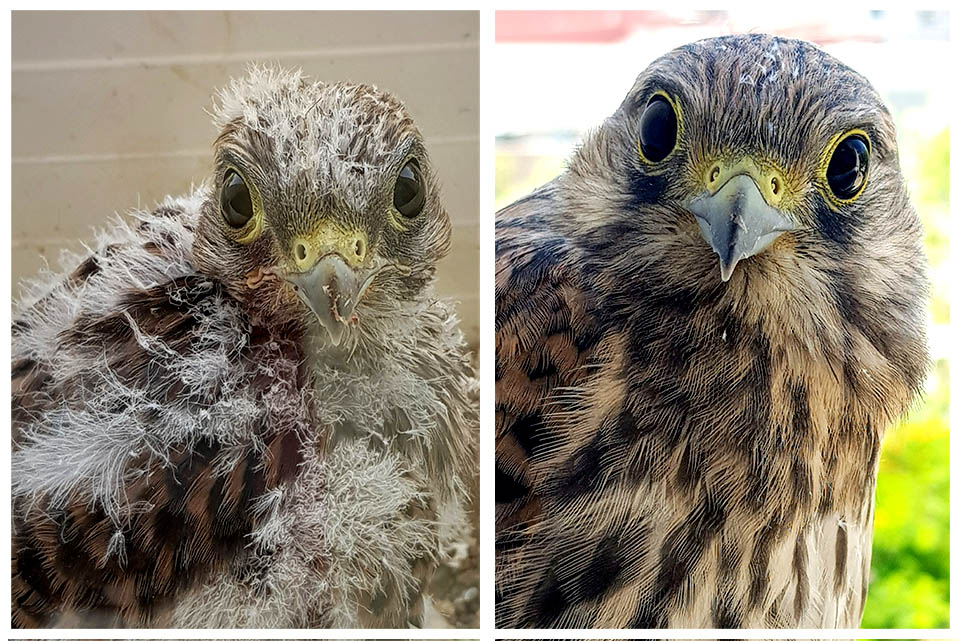Are you a journalist? Please sign up here for our press releases
Subscribe to our monthly newsletter:
An empty flower pot with a little soil in the bottom, sitting on a window ledge on the third floor of the Veterinary Services Department of the Institute. Two kestrels looked it over, decided it was the perfect spot to start a family.
Within a few days there was an egg; and then there were four little off-white eggs with reddish-brown spots. On the other side of the window, Shlomit Ben-Meshulam, the department secretary, held her breath. Other members of the department came to look, wondering whether the birds might get scared off by the presence of humans, whether the chicks would hatch.
The male ‒ his head blue-gray, his tail feathers blacker ‒ shared incubation duties equally with the female, one flying off to find food while the other sat on the eggs in the flowerpot.
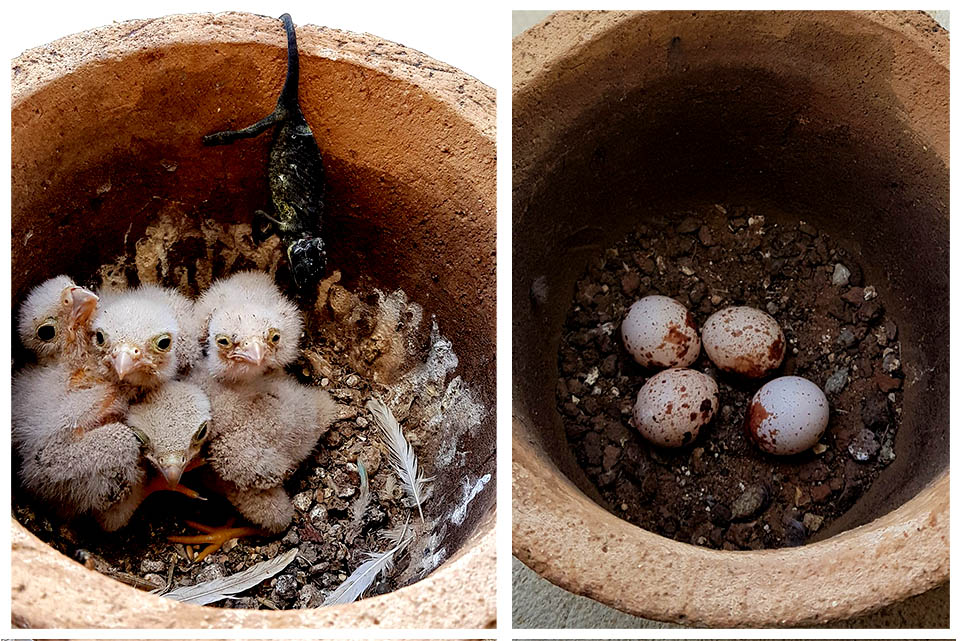
It took about a month. All in the same morning, four adorable little chicks appeared, covered in light fluffy down, hungry mouths already open to the sky. One of them was smaller than the others, weaker and not getting its share of the food. Soon there were only three.
Feeding three hungry chicks is a full-time job, and Shlomit noticed that now it fell to the mother to feed them. And the chicks were always hungry.
The parents were skittish, frightened by sudden movements on the other side of the window, but the chicks were fearless, and they seemed to be curious. Shlomit found herself caught up in the drama unfolding outside her window, and she documented it, photographing the chicks as they grew.
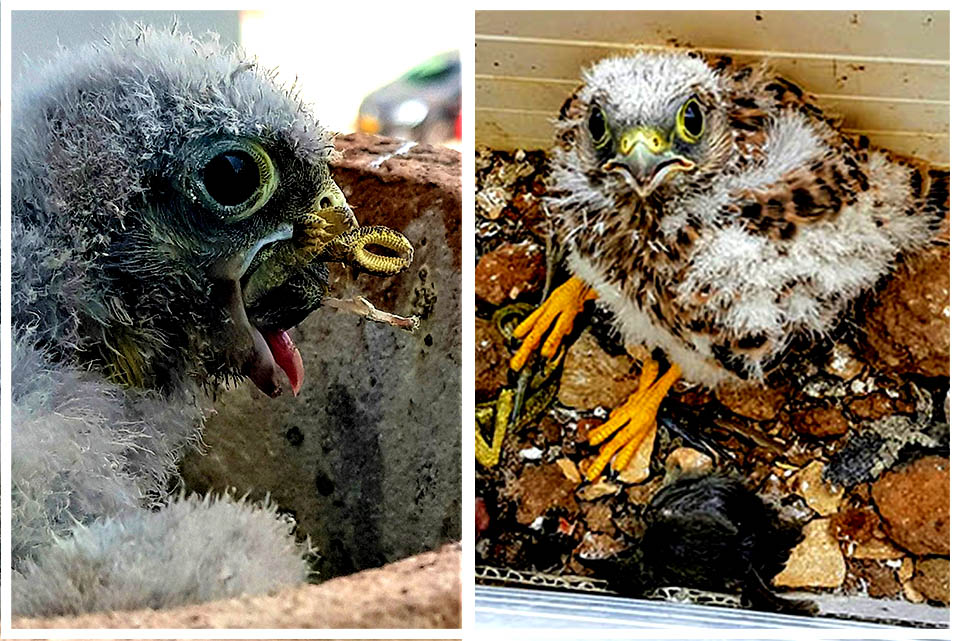
The chicks ate chameleons by the dozen. The mother kestrel brought them all kinds of small animals: mice, small birds and chicks stolen from other nests, lizards, but especially lots and lots of chameleons, which even camouflaged were no match for her sharp eyes.
As the baby down gave way to adult plumage – light brown with dark stripes, they were weaned from pre-chewed food and the mother taught them how to eat the animals she brought back to them whole, sometimes even to kill them if they were still alive. Shlomit worried in the beginning they might choke on such big pieces of food. In any case, it was not a pretty sight, and the feasts left messes on the ledge for Shlomit to carefully clean up in the morning.
Still, observing the mother’s dedication to her chicks was a reward in itself. Shlomit learned that kestrels might only succeed once in ten attempts to catch prey, so the cost of feeding the chicks was enormous. She noticed that the mother kestrel lost weight.
One day, the mother brought some choice prey to her chicks, but she grabbed it and brought it back several times, as if her own hunger was conflicting with her need to feed her offspring.
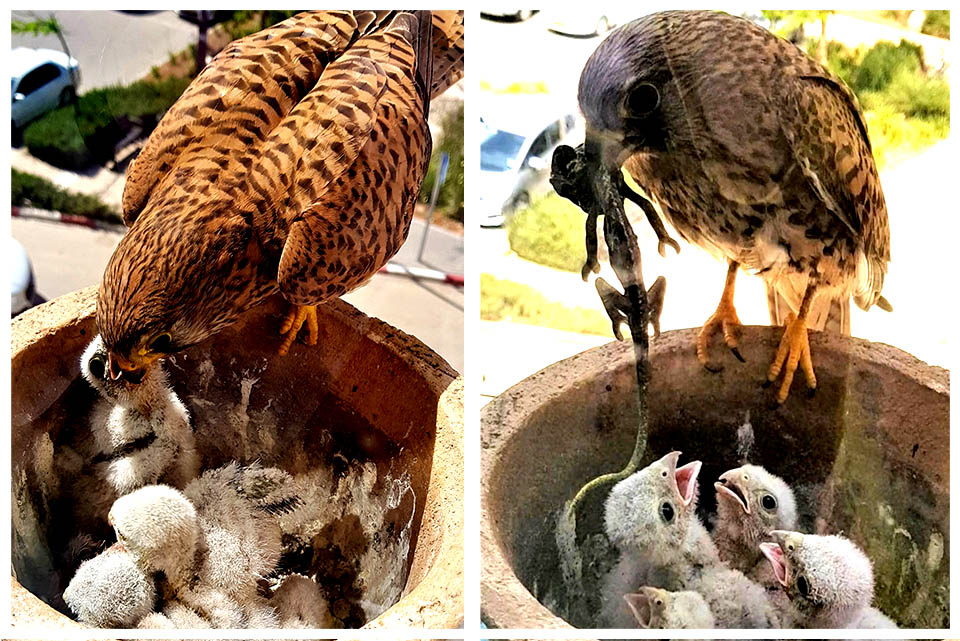
Shlomit and her office-mates started calling the three young birds “the girls” because they were the spitting image of their mother. She later learned that young male kestrels do not develop the typical gray-blue heads and black tail feathers until after their first year. But they remained “the girls.”
The flowerpot was getting crowded as the chicks became teenagers, until there was no room for the mother bird. The group decided to give the family a larger home – a bigger flower pot. They put some clean soil on the bottom and waited for the mother to fly off, moved the chicks gently with gloved hands. They all breathed a sigh of relief when the mother bird came back with food and fed her young as if nothing had happened.
The new pot had lower sides that made it easier to photograph them, but also for the chicks to get out. Shlomit worried that the young birds that had not yet learned to fly might fall off the ledge, but they remained close to the nest, hopping between pots and exploring their surroundings.
Word of the kestrels nesting on a window ledge spread, and Shlomit found herself part nature guide, part proud grandmother, explaining to children and showing off the photo album.
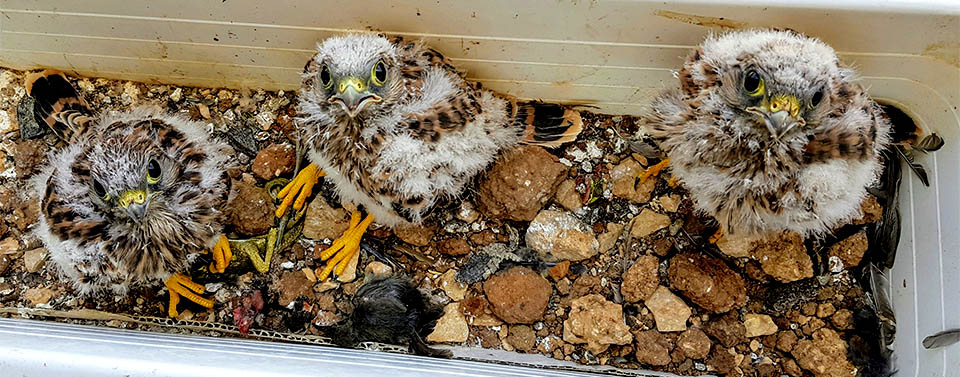
It’s not for nothing they call it “empty-nest.” Shlomit found she had grown to care deeply about the kestrel “girls” that were getting ready to fly. One morning only two kestrels were sitting on the ledge. The third one was in a tree opposite the window. Within a day or two, the others were trying out their wings. They did come back to the window once, maybe to say goodbye, maybe to look for scraps of food on the ledge.
At least in the beginning, they stayed close to home, and people would sometimes see three young kestrels sitting together on a branch not far from the window. Shlomit, who felt she had shared, for a short while, the most intimate moments in the lives of these birds, wondered if they would make new homes at the Institute, whether they would find mates and raise chicks of their own. She wondered whether the birds would remember the human on the other side of the pane who had taken such a great interest in their lives.
